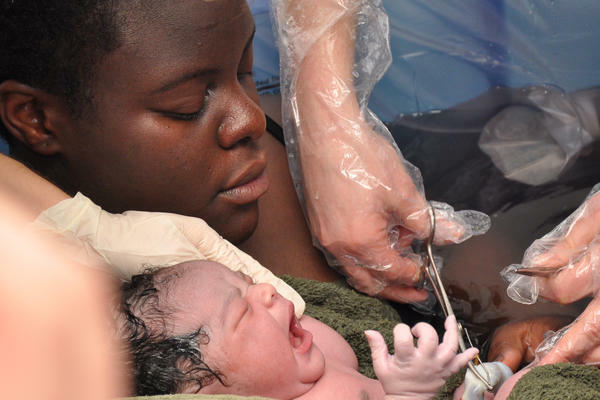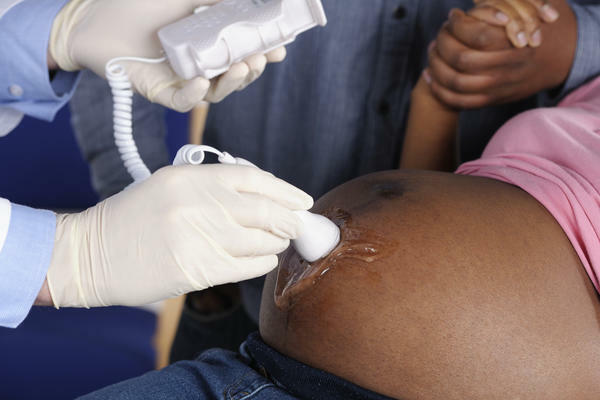The risk of maternal and newborn deaths is significantly higher in low- and middle-income countries compared to high income countries. Adequately trained health workers in Emergency Obstetric Care (EmOC) can reduce this risk. Our ‘Making It Happen’ (MiH) programme designed and implemented EmOC interventions over 7-years (2009-2016) in 3-Asian and 6-sub-Saharan Africa countries, to improve the availability and quality of EmOC. MiH reduced maternal mortality and stillbirths by improving access to EmOC-trained staff in a cost-effective manner; it is now being scaled up in all participating countries.

Most maternal and new-born deaths occur in sub-Saharan Africa and South Asia.
- Most maternal deaths are due to pregnancy related bleeding, pre-eclampsia/eclampsia, pregnancy related infection, complications from obstructed labour and complications from a miscarriage or termination of pregnancy.
- Preterm births are mainly due to lack of breathing at birth and infections, and birth defects (which are not treatable using EmOC) are the most common causes of neonatal deaths.
The proportion of births attended to by skilled health personnel increased steadily from 62% in 2000 to 81% in 2018 (WHO Africa region: 59%, South East Asia region: 81% (c.f. Europe 99%)). However, this strategy has had only a limited impact on maternal and neonatal mortality. Thus, although reductions of 35% and 50% have been seen between 2000 and 2018 in maternal and neonatal deaths respectively, there remained 295, 000 maternal deaths and 2.4M neonatal deaths (24% of which were related to complications during labour and childbirth) in 2018 – appalling figures.
We have been able to show that increasing the availability of excellent emergency obstetric care (EmOC) by health personnel can reduce the risk of death. Over 2 phases (phase 1: 2009-2011 and phase 2: 2012-2016), with funding from DFID, we implemented and measured the impact of our Making it Happen (MiH) programme in 11 sub-Saharan African and Asian countries (Bangladesh, India, Kenya, Sierra Leone, Zimbabwe, South Africa, Malawi, Pakistan, Ghana, Nigeria, and Tanzania). 4,5 The aim of the programme was to improve quality and availability of skilled attendance at birth (SBA), and EmOC.

The three intervention packages were designed and implemented during the MiH programme:
1) An EmOC training packageaimed at improving the quality of maternity care.
2) Data training workshop, aimed at strengthening routine data collection, analysis and use for quality improvement.
3) Quality improvement methods workshop aimed at strengthening quality-improvement methodology at health facility level.
There was a lack of clarity around the term “skilled birth attendant”, as applied in differing contexts, and several studies were done to address this1, 2, we determined the baseline status of EmOC in MiH countries2, reviewed the causes of stillbirths 2 and to determine the effectiveness and impact of the MiH interventions using ‘before-after-studies’ (BAS)3, 4, economic evaluation methodology5 and step wedge study designs (SWD).6
A Theory of Change and a 4-level framework was developed and used to a evaluate the effectiveness of interventions and monitor the progress of the programme.8 Outcome measures at baseline were compared with 12 months after the intervention in included facilities. Quantitative and qualitative data4 were collected pertaining to the women and babies who accessed health facilities with or without complications during pregnancy and childbirth, healthcare providers providing maternity care and healthcare facilities designated to provide EmOC. In South Africa a SWD study was used with random allocation of 127 health facilities across 11 districts. 6
Adaptations were made to the intervention package (and its coordination and monitoring) in each country via multi-stakeholder steering groups.7 These groups met every quarter between March 2009 and October 2016 and comprised the host Ministries of Health (MoHs), professional midwifery, obstetric and clinical officer associations, their respective regulatory bodies and selected academic/research institutions. Steering groups were critical for local ownership of the MiH programe, leading to its sustainability and dissemination. The beneficiaries have been women and their babies, pre-service training institutions (medical, midwifery and clinical officer schools) and MoHs. Specific examples of the nature of the impact is provided below.

Improved access to and availability of life saving emergency obstetric care, and more lives saved
During the life-time of the programme9 across 963 healthcare facilities in the MiH implementation countries,
- 273,510 more women attended for delivery at a healthcare facility and 16,946 more women were received EmOC
- An estimated 6,763 stillbirths were avoided, 1,452 mothers’ lives saved and 4,946 newborn lives were saved i.e. 13,161 lives saved.

New Emergency Obstetric Training Packages adopted and scaled up
Before implementation of the MiH programme, in-service EmOC training packages were irregular, lengthy and not based on the best evidence. Following local adaptation of our MiH programme National EmOC training programmes have been adopted in all participating countries. At the end of MiH, the EmOC training package was adopted in Ghana, Nigeria, Sierra Leone, Kenya, Malawi, Tanzania, Nigeria, Zimbabwe, Bangladesh and South Africa. Specific examples of scaling up.
- Bangladesh: The LSTM Emergency Obstetric and Newborn Care course is offered at the Bangladesh College of Physicians and Surgeons. It is a prerequisite course for all part 2 obstetric specialist trainees (BCPS: Departments, skill development https://bcps.edu.bd/#)
- Kenya: DFID Kenya, scaled up the MiH programme from 15 counties to all 47 counties from November 2013. The programme is currently being implemented in 5 counties and supports pre-service education nationally till March 2023. https://devtracker.dfid.gov.uk/projects/GB-1-202549. The University of Nairobi and 14 Kenya Medical Training Colleges also directly benefited from the intervention. The EmOC training methodology and content are now part of the training curriculum in these institutions.
- Nigeria: Johnson and Johnson USA through their community partnership have funded the expansion of the MiH programme in Abuja and Kwara state since 2012. Both in-service and pre-service training is supported under the current programme that ends in July 2020. https://www.jnj.com/sites/default/files/our-giving/pdfs/nigeria.pdf
- Republic of South Africa: Following the adaptation of the LSTM EOC&NC training package the ESMOE course has been scaled up in South Africa with funding from DFID South Africa, MSD for Mothers and the RSA National Department of Health. 12-14 https://www.up.ac.za/centre-for-maternal-fetal-newborn-and-child-healthcare/article/2819785/esmoe
The MiH programme contributed to the WHO guidelines for review of stillbirths and neonatal deaths. 16
Value for Money
- Cost per maternal and stillborn life saved is between £527.19 and £846.99 (Estimates based on data from Kenya, Sierra Leone and Bangladesh). This translates into cost per life-year averted of £10.96 - £14.99. These ranges indicated that cost-effectiveness varied with context but overall highly cost-effective using WHO thresholds.5
- The use of volunteer facilitators, particularly those based locally, to facilitate EmOC training is a critical driver in increasing social impact and achieving VfM for investments made.5
- The cost per trained healthcare provider per day was I$50.23 and SROI ratio was 12.74:1. Based on multiple one-way sensitivity analyses, EmOC training guaranteed VfM in all scenarios except when trainers were paid consultancy fees and the least amount of training outcomes occurred.
- We have used the finding of this study to advocate through steering groups (Kenya, Bangladesh, Nigeria and RSA) to abolish consultancy fees for local volunteer trainers, this was an essential step in sustaining the intervention.5
The MiH programme has been a catalyst for change (improved knowledge and skills of health workers, improved quality of care and improved capacity to recognise and treat obstetric and newborn complications) and strengthening of the health system for mothers and their newborn.11,13
References
Adegoke A, Utz B, Msuya SE, van den Broek N. Skilled Birth attendants: Who is who? a descriptive study of definitions and roles from nine Sub Saharan African countries. PLoS One 2012; 7. DOI:10.1371/journal.pone.0040220.
Ameh C, Msuya S, Hofman J, Raven J, Mathai M, van den Broek N. Status of Emergency Obstetric Care in Six Developing Countries Five Years before the MDG Targets for Maternal and Newborn Health. PLoS One 2012; 7. DOI:10.1371/journal.pone.0049938.
Ameh CA, White S, Dickinson F, Mdegela M, Madaj B, Van Den Broek N. Retention of knowledge and skills after Emergency Obstetric Care training: A multicountry longitudinal study. PLoS One 2018. DOI:10.1371/journal.pone.0203606.
Banke-Thomas A, Maua J, Madaj B, Ameh C, van den Broek N. Perspectives of stakeholders on emergency obstetric care training in Kenya: a qualitative study. Int Health 2019; published online Feb 26. DOI:10.1093/inthealth/ihz007.
Banke-Thomas A, Wilson-Jones M, Madaj B, van den Broek N. Economic evaluation of emergency obstetric care training: A systematic review. BMC Pregnancy Childbirth 2017; 17. DOI:10.1186/s12884-017-1586-z.
Van Den Broek N, Ameh C, Madaj B, Makin J, White S, Hemming K, et al. Effects of emergency obstetric care training on maternal and perinatal outcomes: a stepped wedge cluster randomised trial in South Africa. BMJ Glob Heal. 2019;0:1670. DOI: http://dx.doi.org/10.1136/bmjgh-2019-001670
DFID UK
Completion Review Report: Making it Happen phase 2: Training Health Professionals to expand and improve Emergency Obstetric Care services. Development tracker accessed 04.11.2019 at [https://devtracker.dfid.gov.uk/projects/GB-1-202945/documents
National Health Mission, Mission of Health & Family Welfare, Government of India Daksh Skill Lab for RMNCH+A Services: Training Manual for Facilitators. Government of India, New Delhi. (See pages v and vii of https://www.nhmmp.gov.in/WebContent/MH/Guidelines/02.01.16/FACILITATOR_3rd_Nov.pdf)
Daksh Skills Lab for RMNCH+A Services: Training Manual for Participants. Government of India, New Delhi. (See pages xi, xiii of https://www.ukhfws.org/uploads/documents/doc_5363_skills-lab-training-manual-participant.pdf)
Aminu M, Unkels R, Mdegela M, Utz B, Adaji S, van den Broek N. Causes of and factors associated with stillbirth in low- and middle-income countries: a systematic literature review. BJOG. 2014. DOI:10.1111/1471-0528.12995.
Ameh CA, van den Broek N. Making It Happen: Training health-care providers in emergency obstetric and newborn care. Best Pract Res Clin Obstet Gynaecol 2015; 29: 1077–91.
Ameh CA, Kerr R, Madaj B, et al. Knowledge and skills of healthcare providers in sub-Saharan Africa and Asia before and after competency-based training in emergency obstetric and early Newborn Care. PLoS One 2016; 11. DOI:10.1371/journal.pone.0167270.
Utz B, Kana T, van den Broek N. Practical aspects of setting up obstetric skills laboratories - A literature review and proposed model. Midwifery. 2015. DOI:10.1016/j.midw.2014.11.010.
Moran NF, Naidoo M, Moodley J. Reducing maternal mortality on a countrywide scale: The role of emergency obstetric training. Best Pract Res Clin Obstet Gynaecol 2015. DOI:10.1016/j.bpobgyn.2015.08.002.
Pattinson RC, Bergh AM, Makin J, et al. Obstetrics knowledge and skills training as a catalyst for change. South African Med J 2018. DOI:10.7196/SAMJ.2018.v108i9.13073.
Pattinson RC, Bergh AM, Ameh C, et al. Reducing maternal deaths by skills-and-drills training in managing obstetric emergencies: A before-and-after observational study. South African Med J 2019. DOI:10.7196/SAMJ.2019.v109i4.13578.
DFID Kenya: Reducing Maternal and Newborn Deaths in Kenya, programme documents: Development tracker accessed 04.11.2019 at [https://devtracker.dfid.gov.uk/projects/GB-1-202549]
WHO Making Every Baby Count Audit and review of stillbirths and neonatal deaths, 2016 (NVDB acknowledged on Pg 2) https://www.who.int/maternal_child_adolescent/documents/stillbirth-neonatal-death-review/en/